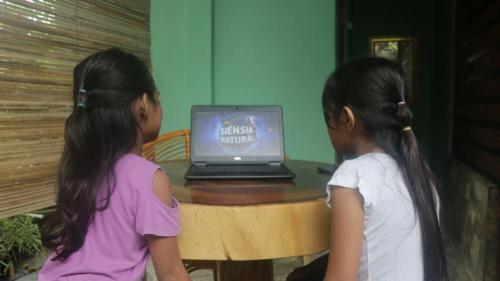But why do films wield such power?
Early examples of using films to educate
The educational value of film has long been recognized. In 1912, the New York Evening Journal published an editorial with the headline, “The Power of Moving Pictures: They Will Educate, through the Eye, Hundreds of Millions of Children.” Essentially, films can capture and dramatize the flux of time, thereby affording viewers a captivating opportunity to interrogate experience and question assumptions.
Peace studies have taught us that peace is a diverse and relational phenomenon that must accommodate images and efforts from diverse cultures, as well as from the marginal strata of society. Films capture images and efforts, weaving them into plots, characters and aesthetic experiences that engage our sensitivity in an irresistible manner.
The January 1955 issue of the UNESCO Courier hailed the potential of films in fostering intercultural dialogue: “One can visit a cinema in Greece, for example, and see a Japanese film spoken in Japanese and carrying Greek subtitles—an unheard of thing a few years ago.”
In a 2011 opinion survey, 98% of surveyed teachers across the United Kingdom responded that “film is a useful teaching tool,” and all of them agreed that “exposure to a wide range of films helps to broaden children’s understanding of the world and other cultures.”
African filmmakers educate on the continent’s heritage
Let us consider one noteworthy initiative in this regard. In 2021, UNESCO and Netflix launched the competition “African Folktales Reimagined” with the aim of supporting young African filmmakers and promoting the continent’s cultural heritage and creative diversity on the global stage. Production grants were awarded to six finalists, resulting in a multilingual anthology of short films released on Netflix in March 2023.
Nigerian filmmaker Femi Odugbemi, who was on the panel of judges for the competition, underscored that this project is important “because the greatest education anyone receives is to travel into the unknown worlds of history, so we can grow the respect and understanding necessary to maintain and preserve mutual respect and peace in the world.” These short films are also notable for featuring strong female protagonists and unflinchingly tackling issues like gender-based violence, suicide and child marriage.
With MaMlambo, South African filmmaker Gcobisa Yako wanted to subvert the “typical and patriarchal portrayal” in folktales, whereby women are often “vilified and shamed.” In doing so, the film simultaneously draws attention to modern structural violence against women that persists in hampering positive peace in South Africa and beyond.
Films to empower today’s learners
Even though peace cannot be decreed, its presence—as well as its absence, the unfortunate reality for many—can certainly be perceived, felt, and experienced in our emotional lives and through the rich imagination that we develop thanks to films.
If we think that young people today, as the media insists, are no longer interested in politics because they are not capable of believing in ideologies or ideals, let us observe them watch a movie.
Jean-François Lyotard may be right in noting that postmodern youth are characterized by “incredulity towards metanarratives,” but films can nonetheless sensitize them to the gamut of transformative emotional experiences.











Add new comment